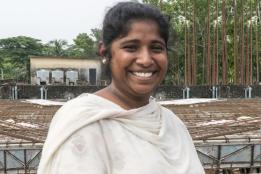SREP Co-financing Ratio by Grid Connection Type
This Results Deep Dive focuses on expected results in mobilizing co-financing through the Scaling Up Renewable Energy Program in Low Income Countries (SREP) of the Climate Investment Funds (CIF). SREP aims to enable the world’s poorest countries to foster transformational change and pursue low-carbo
...This Results Deep Dive focuses on expected results in mobilizing co-financing through the Scaling Up Renewable Energy Program in Low Income Countries (SREP) of the Climate Investment Funds (CIF). SREP aims to enable the world’s poorest countries to foster transformational change and pursue low-carbon energy pathways. It seeks to increase overall energy access for the populations of partner countries; deliver economic uplift; reduce reliance on fossil fuels; and minimize greenhouse gas emissions. SREP, alongside CIF as whole, plays a vital role in mobilizing co-financing from a variety of sources in order to meet these pressing goals. This Results Deep Dive examines the co-financing mobilized for each dollar of SREP funds, calculating the co-financing ratio for the different kinds of grid connections—on-grid, off-grid, and mini-grids—in the current portfolio.
Providing access to clean, affordable energy is critical to mitigating climate change while also improving the lives of millions of people around the world. It therefore constitutes a vital part of CIF's mission, as the CIF has supported the extension of electricity access to over a million people since its inception in 2009. SREP focuses on a group of largely low-income and lower-middle income countries, aiming to fill a persistent gap developing countries face—namely a shortfall in financing for transitions to clean, renewable energy. Developing countries experience a range of barriers to mobilizing such investment, including financial market development, lack of alignment in regulatory frameworks, and institutional capacity challenges. The countries in SREP’s portfolio have been “underserved in terms of concessional finance” and in many cases encounter outsized hurdles in operationalizing projects, including fragile and conflict-affected situations (FCS), natural disasters, governance challenges, and “immature market structures.” As a result, SREP portfolio countries often have a limited track record for investments in clean energy and renewable technologies. Thus, SREP plays an important role in taking the first mover risk and investing in riskier components and aspects of projects in order to mobilize additional financing from other sources.





